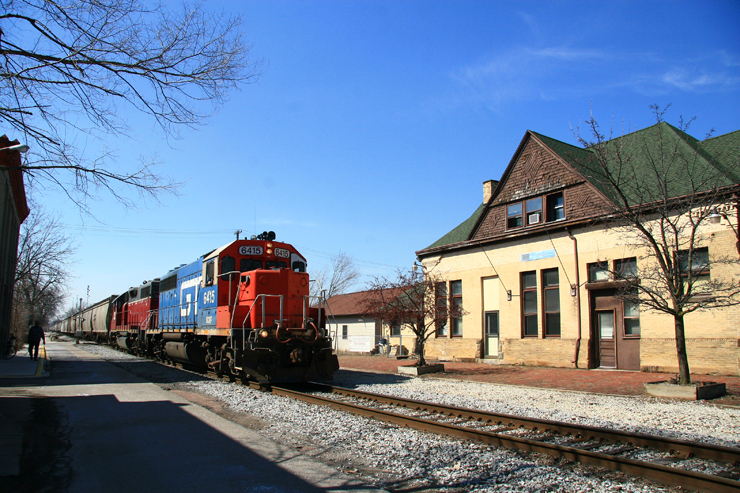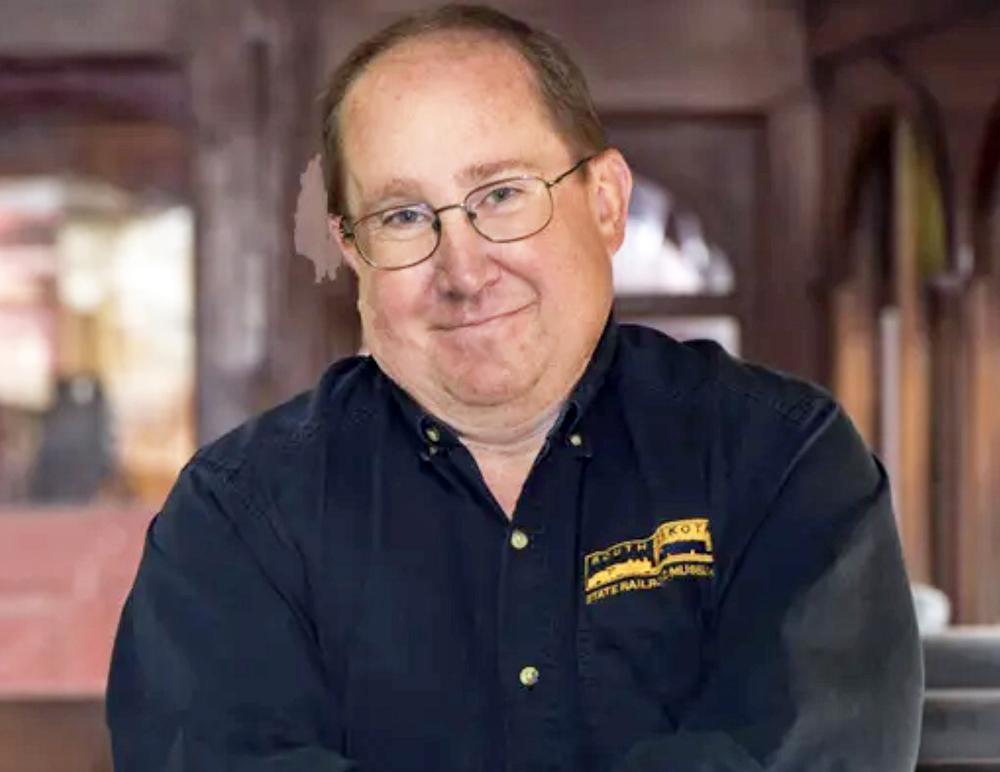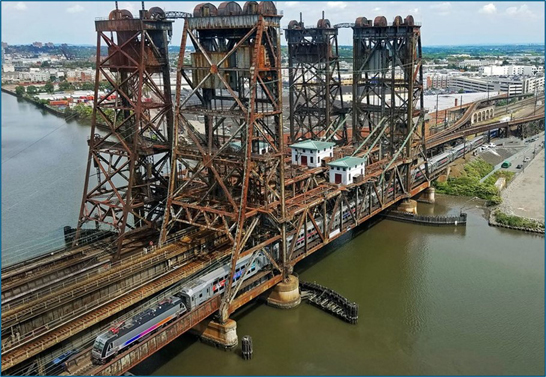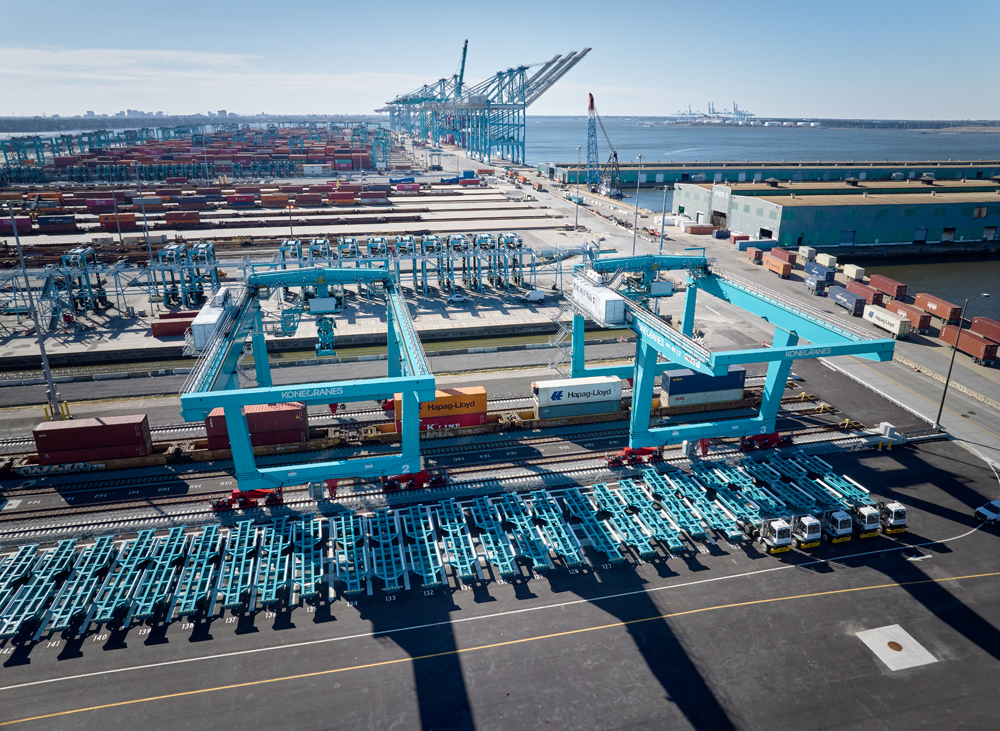VALPAIRAISO, Ind. — Proposed passenger service between Chicago, Fort Wayne, Ind., and Columbus, Ohio, could carry from 387,000 to 765,000 passengers annually, but could cost as much as $1.2 billion to start, according to analysis by an engineering firm, the Northwest Indiana Times reports.
HNTB, which performed the analysis, reported the range of ridership and projected cost ($898 million to $1.2 billion) depends choices regarding the train’s top speed (79 mph or 110 mph) and the number of daily round trips.
“This service is very competitive with auto travel on this corridor,” HNTB Associate Vice President Caron Kloser said during a recent presentation in Valparaiso, which would be served by the proposed route.
Northern Indiana Passenger Rail Association board member Dorothy Hagan said the rail service “could take a lot of pressure off this whole corridor.” The organization is working to build support for the train between Gary, Ind., and Lima, Ohio, while the Ohio Regional Planning Commission is spearheading work between Lima and Columbus.
The association’s next step will be an economic analysis to convince state legislators to support the project, which Kloser said could be in operation as early as 2026.















What is the status of the NS (ex NKP) line between Chicago and Ft. Wayne?
The ex PRR line from Lima through Fort Wayne up to Gary is owned by CSX and leased by the Chicago, Fort Wayne and Eastern (CF&E) and NS (the former owner) has trackage rights on the line. It was formerly two track, but has been single track since after Conrail took over. The sub-grade is still there, under the brush. It wouldn’t take much to clean it up, add ballast and track. It will take much to get all the interested parties to agree to passenger trains again.
But aren’t we all guilty? I know I am. When Amtrak was founded in 1971 and developed over the next decade, didn’t all of us including me make the following three assumptions: (1) The infrastructure was essentially free to Amtrak, which only needed to pay the costs above the rail. (2) The infrastructure was so well built it would last indefinitely. (3) Ohio and Indiana corridors were redundant twice over, so we could dump two-thirds of them and the remaining one line in three would handle he traffic.
These things are all about the politicians spending your money so they can claim they did something. And when it doesn’t work, well “it takes time to grow.” LOL
BILL SNORTELAND asks: “Why not try something more practical…?” Because “practical” isn’t the object. Ohio and Indiana are the Black Hole of passenger railroading, America’s analog to the Canadian Maritimes. Rather than address that issue, come up with a proposal that changes the subject:— an all-new service that will never happen. Lowball the projected, costs, inflate the projected revenue, and collect the consultancy fees. I could come up with a couple of well-worn examples in local transit. In Detroit in the 1980’s, the bus system was in deep trouble. The answer was the incredibly expensive Downtown People Mover that comes nowhere close to places anyone lives. In Milwaukee County in recent years, the bus system keeps losing ridership and it’s not unusual to see a bus with one rider on it. The answer: Milwaukee City Mayor Tom Barrett’s downtown trolley distributor (it debuts this week), a project so ridiculous that not even the lunatic ultra-leftists on the Milwaukee County Board wanted anything to do with it.
Now, if the former Pennsylvania Railroad direct line from Columbus to Chicago had not been gutted,…
The article doesn’t mention Amtrak. The proposed train is not high-speed as the term is commonly used internationally. The proposal sounds more like Brightline in Florida.
Start with conventional service to build customer demand and demonstrate service is needed. And reimburse properly for use of right of way. If this is successful, you could consider the next step. And Amtrak wants to sell some assets soon. If this service cannot sustain itself, the risk has been minimized and there will be no long term obligations.
Why not try something more practical like rerouting the CAPITOL LTD via Ft. Wayne and Butler, IN between Chicago and Toledo on the NS. If ridership warrants additional service can be added later. As proposed this is just not going to happen.
I agree with Charles, Amtrak needs way better times in ohio for their existing routes. Cincinnati, Toledo and Cleveland have no service unless you don’t mind boarding a train in the wee hours. Extending the Pennsylvanian to Cleveland would be a good start.
Mr. Landey: The Tenn-Tom is carrying about 1/56th of what was originally forecast when the boosterish but scientifically bankrupt benefit:cost “studies” were conducted decades ago. And two once-viable main line railroads that ran north out of Mobile — the old Mobile & Ohio’s main line to Meridian and the Alabama, Tennessee & Northern — were largely abandoned. As in, gone for good. I am fearful that the “economic analyses to convince state legislators” — complete with pre-ordained conclusions — being sought for this rail project will be frightfully similar to biased economic research that brought us the Tenn-Tom debacle. If I were a taxpayer in this region, I would be holding tight to my watch, wallet, and rings. In summary, it looks as if the “Wouldn’t It Be Nice If” crowd is in charge.
Let’s start by getting some better service on Indiana and Ohio existing routes before pretending an all-new high-speed route would ever happen.
Mr. Landey: According to OHDOT railroad map, nothing directly connects Columbus and Lima. There are three northbound lines out of Columbus that connect with the Chicago and Fort Wayne: Norfolk Southern’s line through Marion to Bucyrus, a CSX line through Marion to Upper Sandusky, and another CSX line through Kenton to Dunkirk. The only route with an interchange is the Norfolk Southern. On the other hand, maybe they are planning to take Norfolk Southern west to Springfield, get on the Indiana & Ohio, and then connect with the Chicago and Fort Wayne in Lima. There are existing interchanges on the latter route.
ARTHUR MILLER _ Well, I did five minutes worth of research on Tenn-Tom. That is, I skimmed the Wikipedia entry on that subject. It seems as if the jury is still out on Tenn Tom. It does carry some traffic and its construction cost during the Nixon – Ford – Carter – Reagan era was about .00000001% what it would cost now.
Getting back to the FW&C line, I assume the study assumes the prior completion of the 75th Street CREATE project. That being said, I’m quite sure that the regional railroad (east of Chicago to Lima) and that Amtrak and Norfolk Southern (between 75th Street and Union Station) could find good use for the $1.2 Billion. Several times over. For example, there’s that draw bridge over the Chicago River down by Chinatown. It could use replacement.
Lima to Columbus I’m not familiar with. I’ve been in both cities of course but I don’t have a clue what sort of railroad connects them. That being said, I’m quite confident that whatever is left of the $1.2 billion after several times that is spent west of Lima could be put to good use.
Does anybody else wonder where they pulled the potential passenger numbers from? Even at the low end that’s over 1,000 people per day. According to another post Amtrak was hauling only 725 passengers a day on a line that served 3 metropolitan areas of several hundred thousand people. Plus Amtrak’s shuttle connected to the NEC and Metro North. What do they expect, everyone to leave their cars at home and take the train. What about the airlines? They can make the same trip considerably cheaper. And no matter where they are going (other than maybe downtown Chicago) they are going to need a car when they get there.
Mr. Landey: I phrased my post deliberately. Between Penn Central and Conrail, almost all of the PRR MidWest lines disappeared or were downgraded,as both railroads chose New York Central routes over PRR routes (with the exception of much of the line west of Indianapolis). The Fort Wayne to Chicago segment of the proposed route isn’t even part of the PRR PanHandle. Now, as for deferred maintenance I remember my first westbound trip on the National Limited in September 1973 — waking up in the middle of the night at stops in Columbus and Dayton with the cars badly tipped because of poor track.
So, we’re going to have “…an economic analysis to convince state legislators to support the project…?” Wow. I’ll bet this will be one fine piece of totally unbiased research. (sarcasm) This “economic analysis,” with its outcome predetermined, could become this century’s equivalent of A. T. Kearney’s work in support of the Tennessee-Tombigbee Waterway. Indeed, this sort of project would make my old research methods Professor Fred Kerlinger cringe. Maybe these groups should consider doing some real science before asking for billions of tax dollars.
It used to be called “the Ft. Wayne Speedway” and for good reason. Even today a casual drive along parts of it reveal high quality engineering with long tangents.
HNTB – This is a superb engineering firm. I’ve spent hours – years actually – working with HNTB’s engineering designs, which uniformly set the standard for other engineering firms to live up to. HNTB should stick to engineering. Not guess work, as is the case with this study.
JAMES SHIGLEY _ PRR’s – Penn Central’s – main line through Warsaw was already in deferred maintenance in 1971 when Amtrak first ran The Broadway Limited. Since then, as you note, it’s been downgraded to regional railroad status. How Indiana would intend to resurrect it for medium-speed or high speed passenger service is quite a relevant question.